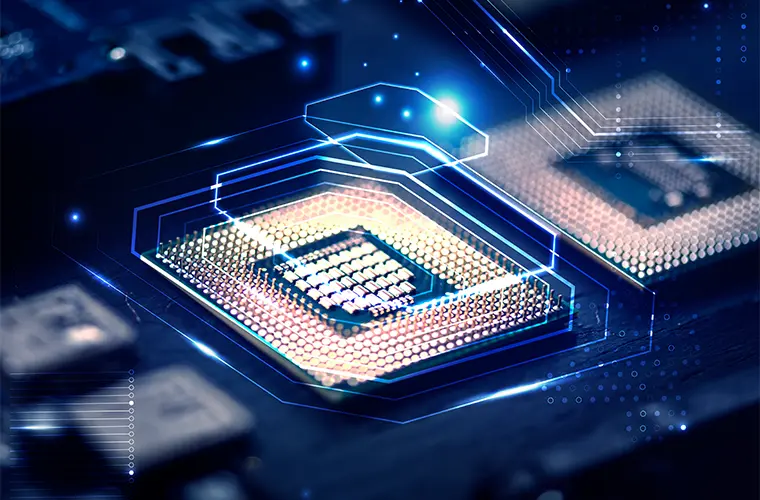In the race toward practical quantum computing, researchers in Finland have achieved a new milestone by extending the coherence times of a superconducting transmon qubit to near one millisecond, shattering previous records and bringing us a step closer to fault-tolerant quantum computation.
In a newly published study in Nature Communications, scientists from Aalto University and the VTT Technical Research Centre of Finland report that their transmon qubit demonstrated energy relaxation and echo dephasing times well beyond any values previously reported for this type of qubit.
One of the devices achieved an echo dephasing time exceeding 1 millisecond (1.057 ms)—more than triple the best figures in recent literature.
“We have just measured an echo coherence time for a transmon qubit that landed at a millisecond at maximum with a median of half a millisecond,” study author and PhD student at Aalto University, Mikko Tuokkola, said in a press release. “The median reading is particularly significant, as it also surpasses current recorded readings.”
For context, coherence time refers to the duration during which a quantum bit, or qubit, can maintain its quantum state before succumbing to environmental noise and decoherence.
Two key metrics—energy relaxation time (T1) and echo dephasing time (T₂)—define how long a qubit remains viable for computation. Historically, coherence has been a bottleneck, limiting the number of operations a qubit can perform before errors begin to creep in.
The team’s record-setting transmon qubit hit a median energy relaxation time of 425 microseconds, with a maximum of 666 microseconds and a median echo dephasing time of 541 microseconds, peaking at 1,057 microseconds. By comparison, previous top-tier transmon devices typically achieved T1 and T2 times below 400 microseconds.
“These results surpass the previous results for a transmon qubit reported in the literature,” researchers write. “This result represents a significant step in the development of high-coherence superconducting qubits by approaching the millisecond mark for the energy relaxation and dephasing times of a transmon qubit.”
Transmon qubits, first introduced in 2007, are the workhorse of today’s superconducting quantum computing architectures, including those developed by Google, IBM, and others. Their design leverages Josephson junctions and a shunt capacitor to suppress noise, making them well-suited for scalable architectures. However, even minor improvements in coherence can have a significant impact on error rates and computational reliability.
What makes this result especially significant is that it wasn’t a lucky one-off. The team emphasized the focus on reproducibility, with detailed breakdowns of their fabrication and measurement techniques included in the publication. This provides a roadmap for other research groups and companies seeking to replicate or build upon this achievement.
“We present detailed information on our design, fabrication methods, and measurement setup for a high-coherence transmon qubit,” the authors note. “Detailed reporting of a high-coherence qubit will benefit the research community and accelerate the global efforts on developing quantum sensors, quantum simulators, and quantum computers based on superconducting quantum technologies.”
To reach this milestone, the researchers used a combination of innovations. These included optimized niobium patterning, refined Josephson junction fabrication using a precise electron-beam lithography process, and highly controlled thermal and chemical treatments to reduce imperfections and prevent decoherence.
One of the key tools in their setup was the use of a traveling-wave parametric amplifier (TWPA), which amplifies readout signals without significantly adding noise. Although the TWPA didn’t directly increase the coherence times, it improved the accuracy of the measurements by enhancing signal clarity.
Notably, the team’s second measurement run, conducted after re-cooling the system, still demonstrated strong coherence—though not quite matching the peak times observed initially. This drop, they say, was likely due to oxidation and environmental changes during storage and handling, underscoring the delicate nature of maintaining high coherence even after fabrication.
“Our fabrication method and experimental setup can also be applied to other types of superconducting qubits, such as the unimon qubit, to enhance its energy relaxation and dephasing times, and also to large-scale manufacturing,” researchers write.
This progress is especially timely as quantum hardware developers push for error-corrected quantum processors. Current state-of-the-art systems still struggle with fidelity, requiring substantial redundancy to compensate for errors introduced by the limited lifetimes of qubits. Pushing coherence into the millisecond range could dramatically reduce these overheads and unlock more efficient quantum processing.
Researchers have noted that with this latest breakthrough, Finland further solidifies its reputation as a rising quantum powerhouse, joining the ranks of nations such as the United States, China, and the Netherlands in pioneering next-generation computing technology.
“We have been able to reproducibly fabricate high-quality transmon qubits,” co-author and postdoctoral Scholar at Stanford University, Dr. Yoshiki Sunada, explained. “The fact that this can be achieved in a cleanroom which is accessible for academic research is a testament to Finland’s leading position in quantum science and technology.”
Backed by funding from the Research Council of Finland, the European Research Council, and the Finnish Quantum Institute, the project demonstrates how strategic investment in quantum research can yield world-leading results.
“This landmark achievement has strengthened Finland’s standing as a global leader in the field,” co-author and head of Aalto’s Quantum Computing and Devices (QCD) research group, Dr. Mikko Möttönen said. “Moving the needle forward on what can be made possible with the quantum computers of the future.”
Tim McMillan is a retired law enforcement executive, investigative reporter and co-founder of The Debrief. His writing typically focuses on defense, national security, the Intelligence Community and topics related to psychology. You can follow Tim on Twitter: @LtTimMcMillan. Tim can be reached by email: tim@thedebrief.org or through encrypted email: LtTimMcMillan@protonmail.com

